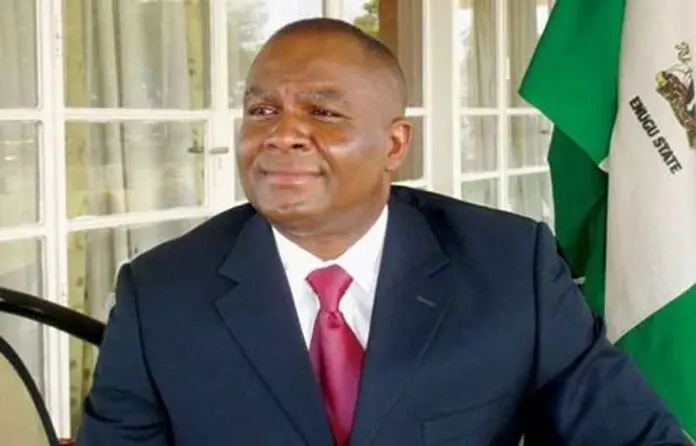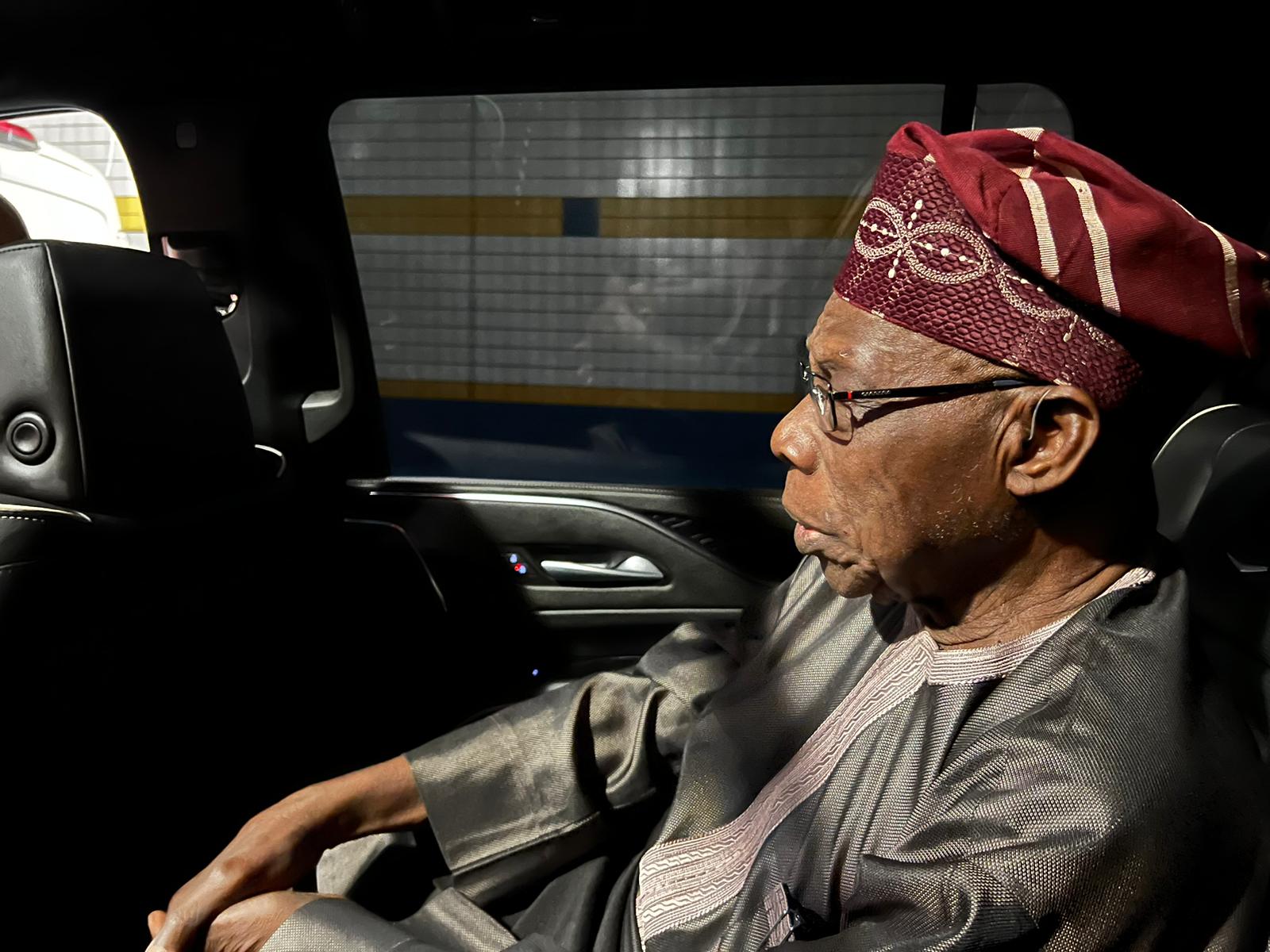In early September 2002, the Nigerian Minister of Defence, Lt. Gen. TY Danjuma (rtd) set up a Military Installation naming committee comprising Brig.-Gen. Mobolaji Johnson (rtd); Lt.-General M. I. Wushishi (rtd), General D. Y. Bali (rtd); Major General M. C. Ali (rtd); and Brig-General Pius Obi (rtd). The Committee Secretary is Brig.-Gen. A. N. Bamali.
Since the membership committee is exclusively comprised of former Army officers one must presume that its focus is on Army Installations. Among other things it was tasked: "To determine the propriety or otherwise of naming military installations after individuals; to examine ways of reviving the names inherited from colonial era that have now been abandoned; to recommend appropriate additional names arising from the Nigerian Civil War, ECOMOG operations in Liberia and Sierra Leone and any other peace-keeping operations in which Nigerian troops suffered casualties." The Minister told Pressmen that during the colonial era and shortly after Independence, military barracks in Nigeria used to be named after famous battles or campaigns in which Nigerian troops fought. Examples abound, including An, Letmauk, Dodan, Myohaung, Tamandu, Tego, Arakan, etc.. Specifically the Minister was quoted as saying: "At no time was any barracks named after individuals whether dead or alive. The first departure from this practice was recorded when the military cantonment in Kaduna was named after Alhaji Muhammadu Ribadu, the first Minister of Defence."
Many Barracks in Nigeria are named after individuals of all kinds, including Muhammadu Ribadu, Wellington Bassey, Zak Maimalari, Yakubu Gowon, John Obienu, Sani Abacha, Aguiyi Ironsi, Ibrahim Babangida, Adaka Boro, Gado Nasko, David Ejoor, Zamani Lekwot etc... Some have even been renamed at least once - like the former Olusegun Obasanjo Barracks in Abuja. Nor are there any clear cut criteria for naming of buildings and streets within Barracks and Cantonments.
General Danjuma told the committee to come up with rigorous criteria for naming such installations and examine ways of reviving names inherited from the colonial era.
Fair enough.
Clearly, every country has it own way of memorializing its heroes. Knowing how we tend to abuse things in Nigeria and undeserving characters get their names memorialised for dubious reasons, General Danjuma's instincts are laudable. Although the officers named to the Panel are all distinguished in one way or another, the precise criteria for the membership of the Military Installation Naming Committee, however, are unclear. Furthermore, there does not seem to be any mechanism - at least on the Internet - by which the non-military civilian public can contribute to the development of naming criteria and names.
For example, one is at a loss about why the military history of pre-colonial Nigeria does not seem to have risen to the level of consciousness of those who conceptualised the terms of reference of the committee. Are there no military heroes and notable campaigns from the wars our ancestors fought to resist colonialism? Do we not have precolonial military innovators and geniuses in all of the various Kingdoms and nationalities that comprised what later became Nigeria? In a separate article I shall address this issue again - particularly as it impacts the design of ceremonial uniforms for the Nigerian Armed Forces.
But for now, as a comparative example, let us take a look at the history behind the names of various United States Barracks and Bases. As we take this guided tour it will be evident that numerous factors are reflected in the memorialization policies of other countries. There are even differences between and within services. In the US Army all sorts of criteria have been applied over the years - although these have been more streamlined in recent decades. Deceased soldiers and civilians from other Services or employees of the Department of Defense can be memorialized who have made outstanding contributions or performed heroic actions which contributed to the Unit's or Base's or Services's mission. While US Naval Air Stations, for example, tend to be named after the nearest Post Offices, their ships and submarines are named using more conventional memorialization criteria. The US Air Force leans heavily toward naming their bases after aviators who died in combat or tragic peace-time circumstances or made fundamental contributions to the service. Installations are named after officers and other ranks of various ranks, sensitive to the need to honor heroes from that particular locality as well as the rank structure of those who predominate in the active military units allocated to that base. While a post-humous status is strongly preferred and enforced, there have a been very rare cases of ante-mortem memorialization (like Ronald Reagan).
US ARMY
In ALABAMA, although now closed, the old FORT McCLELLAN was originally named after Major General George B. McClellan, General-in-Chief of the U.S. Army from 1861 to 1862 and later Governor of New Jersey from 1878-1881. He was credited with the rapid mobilization of the Army of the Potomac during the US Civil War. FORT RUCKER was named after Confederate General Edmund W. Rucker, a native of the state of Tenessee nearby.
In ALASKA, FORT RICHARDSON was named after Brigadier General Wilds P. Richardson, a military pioneer explorer in Alaska, who served three tours of duty between 1897 and 1917. He commanded troops along the Yukon, supervised construction of Forts Egbert and Seward, and survey of the Valdez-Fairbanks trail. FORT WAINWRIGHT is named after General Jonathan Mayhew Wainwright, Medal of Honor winner, North Luzon Commander and defender of Bataan against the Japanese in WW2.
In ARIZONA, FORT HUACHUCA was named after an Indian word meaning "place of thunder".
In CALIFORNIA, the FORT IRWIN NATIONAL TRAINING CENTER was named after Maj. Gen. George Leroy Irwin, Commander, 57th Field Artillery Brigade, World War 1, also known as the “Iron Brigade” which is said to have fired more artillery rounds than any brigade in the American Army.
In COLORADO, FORT CARSON, is named after a famous (some say notorious) trapper, scout, Indian agent, soldier and legend of the West called Kit Carson.
In the DISTRICT OF COLUMBIA, FORT McNAIR was named after Lt. Gen Lesley McNair, Army Ground Forces Commander, who was killed on the beaches of Normandy in 1944. On the other hand, the WALTER REED ARMY MEDICAL CENTER is named after Major Walter Reed, a frontline researcher in the fight against Yellow Fever.
In GEORGIA, FORT BENNING was named after Confederate Major General Henry Lewis Benning, (also known as known as "Old Rock"), Judge of Georgia's Supreme Court and later civilian turned confederate soldier. FORT GORDON was named after Confederate Major Gen. John Brown Gordon, a distinguished Corps Commander under General Robert E. Lee. He later became Georgia Governor and Senator. FORT McPHERSON was named after Union Major General James Birdseye McPherson who was killed during the battle for Atlanta in 1864. FORT STEWART is named in honor of Brigadier General Daniel Stewart, hero of the American Revolutionary War of Independence and great grandfather of Theodore Roosevelt.
In HAWAII, SCHOFIELD BARRACKS was named after Lt. Gen. John M. Schofield, veteran of the US civil war. The Cantonment also includes Wheeler Army Airfield which was named after Maj. Gen. Sheldon H. Wheeler. On the other hand, FORT SHAFTER is named after Maj Gen William Shafter, Commander of the US in Cuba during the Spanish-American War in 1898. The TRIPLER ARMY MEDICAL CENTER was named after Brevet Brigadier General Charles Stuart Tripler, first Medical Director of the Army of the Potomac during the Civil War while the HALE KOA HOTEL which is used as an Armed Forces Recreation Center named in native Hawaiian for "house of the warrior".
In KANSAS, FORT LEAVENWORTH was named after Colonel Henry Leavenworth who founded the post in 1827. On the other hand, FORT RILEY was named after Maj. Gen. Bennett Riley, hero of the Mexican War.
In KENTUCKY, FORT CAMPBELL was named after General William Bowen Campbell, hero of the Mexican war and also a former Governor of the State of Tenessee. FORT KNOX was named after Maj. Gen Henry Knox, Artillery Commander under George Washington during the revolutionary war.
In LOUISIANA, FORT POLK was named after Confederate General Leonidas Polk.
In MARYLAND, FORT MEADE was named after Maj. Gen George G. Meade, commander of the Union Army at the Battle of Gettysburg. The National Security Agency has occupied it since 1957 and has post-humously memorialized American cryptologists by naming roads on the Base around the NSA in their honor.
In MISSOURI, FORT LEONARD WOOD was named after Major General Leonard Wood, winner of the Medal of Honor during the Geronimo campaign of 1886.
In NEW JERSEY, however, FORT MONMOUTH was named after the men who died at the revolutionary war battle of Monmouth while FORT DIX is named after Major General John Adams Dix, a prominent soldier-statesman from the 19th century.
In NEW YORK, FORT DRUM was named after Lt. General Hugh A. Drum, a one-time commander of the 1st US Army during WW2 while FORT HAMILTON was named after Alexander Hamilton, first US Treasury Secretary.
In NORTH CAROLINA, FORT BRAGG is named after Confederate Artillery General Braxton Bragg from North Carolina.
In OKLAHOMA, FORT SILL was named after Brigadier General Joshua Sill, a Union Officer who died in action during the Civil War.
In PENNSYLVANIA, FORT INDIANTOWN GAP was named after a group of Indian villages that used to be there.
In SOUTH CAROLINA, FORT JACKSON is named after General Andrew Jackson, military hero of the Battle of New Orleans (1814-1815) and later the 7th President of the United States from 1829 - 1837.
In TEXAS, FORT BLISS was named after William Wallace Smith Bliss, one-time Adjutant-General of the US Army (West) and prior veteran of the Florida Seminole and Mexican wars. FORT HOOD is named after Confederate General John Bell Hood while FORT SAM HOUSTON was named in honor of a Texan military Hero and first President of the Republic of Texas.
In VIRGINIA, FORT BELVOIR which was only renamed Fort Belvoir in 1935, has a subinstallation within it called Fort A. P. Hill, which was named after Confederate Lt. Gen. Ambrose Powell Hill, a native Virginian. FORT EUSTIS is named after Brevet Brig Gen Abraham Eustis, first Commandant of the Artillery School at Fort Monroe. FORT LEE, as can be surmised, was named after Confederate General Robert E. Lee, Commander of the Army of Northern Virginia during the US Civil War. On the other hand, FORT MONROE was named after James Monroe, fifth President of the USA. FORT MYER is named after Brig Gen Albert J. Myer, first Chief of Air Signals Corps while FORT STORY is named after Maj. Gen. John Patton Story, a famous artilleryman.
In ths state of WASHINGTON, FORT LEWIS was named after Captain Merriweather Lewis, leader of the famous Lewis and Clark expedition of 1803.
In WISCONSIN, FORT McCOY was named after Maj Gen Robert Bruce McCoy, veteran of the Spanish-American and World War 1 wars. General McCoy's father (Bruce McCoy) was also a civil war veteran and landowner in his time
SOME OVERSEAS US ARMY BASES
During operations in KOSOVO, the US TASK FORCE FALCON named Camp Monteith after Lt. Jimmie Monteith, Medal of Honor winner, 1st Infantry Division, Normandy landings WW2 1944 and Camp Bondsteel after Staff Sgt. James Bondsteel, Medal of Honor Winner, 1st Infantry Division, Vietnam.
In GERMANY, the Maurice Rose Kaserne (Barracks) is named after Major General Maurice Rose, a World War 2 hero. He was the Commander of the 3rd Armoured Division and died in action in 1945. The Warner Barracks is named after Private Henry Warner, who was also killed in action in 1945. Baumholder Ray Barracks (Wattrum Kaserne) in Friedberg is named after Lt. Bernard Ray, Medal of Honor recipient.
The Heidelberg Military Community includes Campbell Barracks, Patton Barracks, Patrick Henry Village, Kilbourne Barracks, Tompkins Barracks and the Kaiserslautern Military Community which was named after Kaiser Frederick 1 because he used the grounds for hunting in his time.
The Kleber Barracks (Kaserne) was named after one of Napoleon's Generals - Jean Baptist Kleber. In the Kitzingen Military Community, the Leighton Kaserne is named after Captain John Leighton, who died in action July 1944 while Harvey Barracks is named after Capt. James Harvey, who died at Normandy. Larson Barracks is named after Captain Stanley Larson who died at Anzio.
In KOREA, Camp Carroll is named after Sgt. Charles R. Carroll, who was killed in action near Waegwan in the Pusan perimeter during the Korean War while Camp Casey is named after Major Hugh Casey who also died in action during the Korean war on a hill nearby. Camp Hialeah on the other hand is named after a famous racetrack in Florida - because the Camp was once owned by a Racing Association.
In PUERTO RICO, Fort Buchanan is named after Brig Gen James Buchanan, the first Commander of the Puerto Rican regiment
US AIR FORCE
Last week we discussed the historical background behind names of Army Barracks in the US Military. This week we shall review some examples of United States AirForce Bases (AFB) that are named after individuals. Let us begin with some overseas Air Force bases.
GUAM
Andersen AFB on the island of Guam was named after Brigadier General James Roy Andersen, Chief of Staff to Lt. Gen. Millard F. Harmon, Commanding General of the Army Air Forces in the Pacific Ocean Areas. On 25 February 1945, a B-24 Liberator carrying Harmon and Andersen took off from Guam, headed for Washington DC, but disappeared and has never been found. Brigadier Andersen originally went to Hawaii in 1944 as Chief of Staff, Headquarters, Army Air Forces, Pacific Ocean Areas but in January 1945 organized the move of the headquarters to Guam. Depot Field, a nearby B-29 aircraft depot and maintenance base was later renamed Harmon Field in honor of General Harmon.
PANAMA
Howard AFB in Panama was originally known as Bruja Point Air Base, but was renamed in honor of Major Charles H. Howard of the U.S. Army Air Corps who flew in Panama during the period 1926-1929. He was part of General Henry "Hap" Arnold's crew on his famed flight of B-10 bombers to Alaska in 1934. Major Howard died in an air crash on Oct. 25, 1936.
CONTINENTAL US BASES
ALABAMA
MAXWELL AFB was originally called Wright Field (in memory of Orville Wright who established a flying school there in 1910), but renamed in 1922 after 2/Lt William C. Maxwell, native of Atmore, Alabama who was killed in an air crash in the Philippines.
ALASKA
EIELSON AFB was named after Carl Ben Eielson, a famous arctic pioneer and aviator.
ELMENDORF AFB was named after Hugh Merle Elmendorf. He pioneered high altitude formation flying tactics during the 1920s and early 1930s and wrote several academic papers on the subject. A superb gunner and expert in deflection shooting, Hugh Elmendorf commanded the 19th Pursuit Squadron from 1922-1924 and won the Army Air Corps gunnery competition in 1927. On April 12, 1930, Captain Elmendorf and other P-12 pilots of the 95th Pursuit Squadron set an unofficial world record at that time for altitude formation flying.
ARIZONA
LUKE AFB was named after Medal of Honor recipient, Lt. Frank Luke, Jr, an indigene of Phoenix. Luke single handedly destroyed 18 aircraft in 17 days in 1918 over France during WW1
DAVIS-MONTHAN AFB was named after Lt. Samuel Davis who died in an aircrash at Carlstrom Field, Florida in 1921 and Lt. Oscar Monthan who died in a crash near Honolulu in 1924.
CALIFORNIA
BEALE AFB was named after General Edward F. Beale who first suggested the use of camels - hence the US Army Camel Corps - for military transportation in the South West
EDWARDS AFB, CA was renamed in 1949 after Captain Glen Edwards, an indigene of California, who was killed during a test flight of an experimental bomber in 1948
McCLELLAN AFB was named after Major Hezekiah McClellan, a pioneering explorer who helped chart Alaskan air routes. He was killed during a flight test in 1936
ONIZUKA AIR STATION is now defunct. It was named after Lt. Col. Ellison Onizuka who died on the Challenger Shuttle in 1986
TRAVIS AFB was renamed after Brigadier Robert F. Travis who was killed in a B29 crash on the runway in that base in 1950.
VANDENBERG AFB was named after General Hoyt S. Vandenberg, a World War 2 Hero and the second US Air Force Chief of Staff.
COLORADO
PETERSON AFB was named after Lt. Edward J. Peterson, from Colorado, who died in an aircrash of an F4 Lockheed aircraft in 1942
DELAWARE
DOVER AFB is named after the State capital of Delaware
DISTRICT OF COLUMBIA
BOLLING AFB, DC was named after soldier-lawyer Colonel Raynal Bolling, pioneer of Army Aviation, one time Commander of the 102nd Rescue Squadron; head of the "Bolling Commission" of 1917. He was the first high-ranking officer killed in WW1 by German officers while driving near the front lines in Amiens, France.
FLORIDA
EGLIN AFB was named after Lt. Col. Frederick Eglin killed in 1937 in an aircrash near Annistion, Alabama
HURLBURT FIELD was named after Lt. Donald W. Hulburt, killed in an aircrash at Eglin AFB in 1943
MacDILL AFB was named after Colonel Leslie MacDill who died in an airplane crash on 9th November, 1938, in Washington D.C. The accident occurred several minutes after his take off from Bolling Field in a BC-1 aircraft. He was one of aviation’s early pioneers.
PATRICK AFB was named after Major Gen. Mason M. Patrick, Head of the Army Air Service from 1921-27.
TYNDALL AFB was named after Lt. Frank Frank B. Tyndall, killed in an aircrash near Mooresville, North Carolina, in 1930
GEORGIA
MOODY AFB was named after Major George Putnam Moody, an indigene of Georgia who died in an aircrash in Wichita, KS in 1941.
ROBINS AFB was named after Brig Gen Augustine Warner Robins, former Chief of the Air Corps Materiel Division
HAWAII
HICKAM AFB was named after Lt. Col. Horace Hickam, who died in an air crash in 1934
ILLINOIS
SCOTT AFB was named after Army Corporal Frank S. Scott who was killed in an aircrash at College Park, Maryland, on 28 September 1912. He was the first enlisted fatality in Signal Corps Aviation in 1912.
KANSAS
McCONNELL AFB was named after the two of the three "Flying McConnell Brothers" from Wichita who enlisted in the Army Air Corps during WW2
LOUISIANA
BARKSDALE AFB was named after Lt. Eugene Hoy Barksdale, a veteran of WW1 who died while flight testing in 1926
MASSACHUSETTS
HANSCOM AFB was named after Laurence G. Hanscom who died in an air crash in 1941
MARYLAND
ANDREWS AFB was named in honor of Lt. Gen Frank M. Andrews, World War 2 Commander of European operations for all Army Air Forces. He was killed in an aircrash in 1943
MICHIGAN
SELFRIDGE Air National Guard Base was named after Lt. Thomas E. Selfridge, the first victim of an aircraft accident
MISSISSIPPI
KEESLER AFB was named after 2/Lt. Samuel Reeves Keesler, Jr. a native of Mississippi who died in action in France during WW1
MISSOURI
WHITEMAN AFB was named after 2/Lt. George A. Whiteman, first military pilot to die in combat in WW2, who, incidentally was an indigene of the area
MONTANA
MALMSTROM AFB was named after Colonel Einar Axel Malmstrom who was killed in a T-33 crash very near the base
NEBRASKA
OFFUTT AFB was named after Lt. Jarvis Jennes Offutt, a native of Omaha killed in an aircrash during WW1
NEVADA
NELLIS AFB was named after Lt. William Nellis, a native killed in WW2 combat in 1944 over Luxembourg
NEW JERSEY
McGUIRE AFB was named after Major General Thomas B. Mcguire, Jr., an indigene of New Jersey who won a medal of honor in WW2
NEW MEXICO
CANNON AFB was named after General John K. Cannon, a national leader in the development of airpower
HOLLOMAN AFB was named after Colonel George V. Holloman, a pioneer in guided missile research
KIRTLAND AFB was named after Colonel Roy C. Kirtland, one of the early military aviators
NORTH CAROLINA
POPE AFB was named after Lt. Harley Halbert Pope, killed in 1919 in an aircrash into the Cape Fear river nearby
SEYMOUR JOHNSON AFB was named after Lt. Seymour Johnson, an indigene of Goldsboro who died in an air accident in Maryland in 1941
OHIO
WRIGHT-PATTERSON AFB was named after Wilbur Wright (aviation pioneer) and Lt. Frank Patterson, a victim of an aircrash at the airfield
OKLAHOMA
TINKER AFB was named after Air Force Maj Gen. Clarence Tinker, indigene of Oklahoma, killed during a bomber raid on Wake Island in WW2
VANCE AFB was named after Lt. Col. Leon R. Vance, WW2 medal of Honor recipient who used to live in the town the Base is located
SOUTH CAROLINA
SHAW AFB was named after Lt. Ervin Davis Shaw (an indigene of the area) who was shot down over France in WW1
SOUTH DAKOTA
ELLSWORTH AFB was named after Brig Gen Richard Ellsworth, who died in an RB-36 air crash in New Foundland in 1953
TENNESSEE
Arnold AFB was named after US Air Force Five Star General Henry "Hap" Arnold, a pioneer aviator
TEXAS
BROOKS AFB was named after Cadet Sidney Brooks, Jr. first person from San Antonio to die in WW1
DYESS AFB was named after Lt. Col. William Edwin Dyess, WW2 Hero who died in an air crash unrelated to combat in California in 1943
GOODFELLOW AFB was named after Lt. John GoodFellow, Jr. an indigene of the area who died in France in a crash in 1918 during WW1
LACKLAND AFB was named after Brig Gen Frank D. Lackland, one time Commandant of Kelly Field Flying School.
LAUGHLIN AFB was named after Lt. Jack Thomas Laughlin, first indigenous Pilot of the area to die in WW2
RANDOLPH AFB was named after Captain William Randolph, killed on take off from Gorham Field, Texas in 1930.
SHEPPARD AFB was named after US Senator Morris Sheppard, one time Chairman of the Senate Military Affairs Committee
UTAH
HILL AFB was named after Major Ployer P. Hill who died in a B-17 crash at Wrigh-Patterson AFB in 1935
VIRGINIA
LANGLEY AFB was named after Samuel Pierpont Langley, aviation pioneer and one time Secretary of the Smithsonian Institution
WASHINGTON
FAIRCHILD AFB was named after General Muir S. Fairchild, indigene of Bellingham in Washington State and one time Vice Chief of the US Air Force
McCHORD AFB was named after Colonel William C. McChord who died in an aircrash near Richmond in Virginia in 1937
WYOMING
F.E. WARREN AFB was named after Francis E. Warren, US Civil War Medal of Honor winner and first Governor of Wyoming
CONTINUE
RETURN

Review of “Evolution of Leadership Research by Larry D. Mathis, PhD, DMin “ The book was first brought to my attention by Shawn Mathis, Ph. D...

This article was first published on November 12, 2024, on https://constitutionaldiscourse.com/a-game-for-the-throne-the-nigerian-constitution-and-the-...

Civil Society and Social Movements: The Role of Activism and Radical Politics in Deepening Democracy in AfricaByOtive Igbuzor, PhDFounding Executive D...

Chimaroke Nnamani: Progenitor of Ebeano politics at 64By Paul MumehChimaroke-Nnamani2.jpg 88.87 KBHate or love him, Senator Chimaroke Nnamani; fo...

Background To The Recent Nigerian ElectionsGeneral Obasanjo more than just a "friend" of the AmericansElizabeth Liagin is an independent journalist wh...